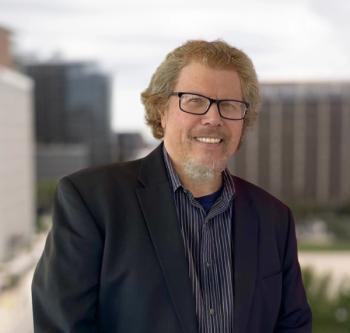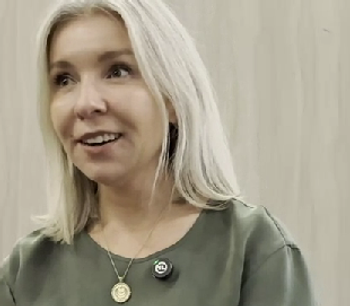News from Day 2 at the National Academy of Sciences Conference on Adult ADHD
Updates from Day 2 at the National Academy of Sciences Conference on adult ADHD.
CONFERENCE REPORTER
Day 2 from the National Academy of Sciences brought powerful presentations by the Centers for Disease Control and Prevention (CDC), National Institutes of Health (NIH), American Professional Society of ADHD and Related Disorders (APSARD), Children and Adults with Attention Deficit/Hyperactivity Disorder (CHADD), Attention Deficit Disorder Association (ADDA), and the US Food and Drug Administration (FDA).
NIH Engages Patient Advocacy
Day 2 began with a panel discussion between Carlos Blanco, MD, PhD, of the NIH and Evelyn Green, MSEd, immediate past president of the ADDA and past president of CHADD. Ms Green made an immediate impact with her riveting discussion of the impacts of growing up with untreated attention-deficit/hyperactivity disorder (ADHD) as a woman of color. A strong advocate in the field who was not diagnosed until her second child received an ADHD diagnosis, she talked about her role as an individual with lived experience in advocating for the equitable care ADHD in underserved communities and communities of color. As the founding member for one of the first inner city CHADD affiliates in downtown Chicago, Ms Green has a 30-year history of advocating and affecting policy change for individuals with ADHD. Her comment “I know that I check a whole lot of boxes… but now it is time to go beyond that” was especially impactful when she discussed the ongoing stigma and structural barriers to ADHD care in communities of color. As Dr Blanco asked her about the risks of stimulant misuse and diversion, she responded by noting that “misuse can be caused by giving the wrong person the wrong medication.”
When asked what were the top 3 things that individuals from communities of color with ADHD wanted to know are, she responded:
- Is it real?
- How do I get help?
- Why?
New Data from the CDC
Next was a fantastic presentation on new data from the CDC by Lara Robinson, MPH, PhD, a behavioral scientist at the National Center on Birth Defects and Developmental Disabilities. Dr Robinson's data showed that ADHD stimulant prescriptions had yearly increase of over 10% in many demographics between 2021 and 2022. In particular, her data showed the greatest increase in those age 20 and above, with the largest increases occurring in women receiving
Understanding Misuse, Abuse, and Diversion
One of the next presentations was by Brooke Molina, PhD, co-chair of the APSARD program committee and professor of psychiatry, psychology, and pediatrics at University of Pittsburgh. Dr Molina discussed the top risk factors for nonmedical use of stimulants, which included data as follows: 1) more frequent in males than females; 2) most prevalent in the 18 to 25 year old population; 3) more common in White students than students of color; 4) more common in students with ADHD symptoms, lower grades, substance abuse and those involved in fraternities or sororities; and 5) those that began taking stimulants at older ages, ie in late adolescence or early adulthood. The most common sources of misused stimulants (for nonmedical use) were 1) same age peers with prescriptions for their ADHD, and 2) from family.
Dr Molina then gave an amazing review of an interventional program that she and her team conducted within primary pediatrician offices to help educate and minimize stimulant misuse and diversion. The top 3 take home training points were: 1) educate your patient, 2) be attentive to supply, and 3) assess and manage risk. The motto used by Dr Molina’s program for families and children with ADHD was: “Protect Yourself, Your Friends, and Your Meds.”
Social Media and ADHD
Jessica Gold, MD, chief wellness officer and associate professor in the Department of Psychiatry at the University of Tennessee, presented an insightful look into the influence of social media and mental health. She presented data from a study that looked at the impact of TikTok and ADHD. This study found that the top 100
For example, an individual who clicks on a video of alternative treatments for ADHD will be further reinforced by seeing additional videos for alternative treatments for ADHD. An individual who looks at treatments for “Do I have neurodivergence” will be reinforced with additional videos that show them that they may have neurodivergence. This then becomes their own personal narrative where they may present to their clinician feeling that they understand this diagnosis, they relate to this diagnosis, and are convinced that they may have this diagnosis. Dr Gold concluded with the need for medical professionals to better understand the influence of social media and medical education and, when possible, to refer their patients to legitimate social media influencers that convey a true medical narrative.
Law, Policy, and Advocacy to Tackle Stigma
Taleed El-Sabawi, JD, PhD, associate professor of law at Florida International University chaired a discussion panel regarding the public policy and legal policies that can be enacted to improve patient access to ADHD care and, in particular, for those with comorbid psychiatric conditions for those from disadvantaged or minoritized backgrounds. She confronted the role of implicit bias, which often assumes that individuals of color are more likely to be misusing or abusing their ADHD medication. In addition, this session tackled the frequent stigma associated with ADHD and comorbid substance abuse.
It was highlighted by a presentation from Patrick Kelly, a young man with childhood onset severe ADHD who has an adult battle both ADHD and significant alcohol abuse. In a riveting description, he talked about the childhood difficulties associated with ADHD impulsivity, poor peer relationships, and difficulties with damaged self-image. As a young adult in college, he began battling significant problems with comorbid alcohol abuse and openly discussed his journey to recovery, which was dramatically improved when he received concurrent treatment for his ADHD. A take home message was his comment, “Imagine trying to sit in an hour-long AA meeting if you have ADHD and have not taken your medicine.”
Concluding Remarks
Concluding remarks were by Marta Sokolowska, PhD, Deputy Director of Substance Use and Behavioral Health in the FDA’s Center for Drug Evaluation and Research, and Craig Surman, MD, scientific coordinator for the Adult ADHD Research Program of the Clinical and Research Programs in Pediatric Psychopharmacology and Adult ADHD at Massachusetts General Hospital, and an instructor in psychiatry at Harvard Medical School. Drs Sokolowska and Surman reviewed the tremendous impact of this meeting for shaping the future of adult ADHD treatment and for advocating for improved access education and public policy for mental health.
Final Takeaway
Perhaps the final takeaway of the National Academy of Sciences 2023 conference was acknowledgement of the tremendous benefit of ADHD treatment, while analyzing the potential risks associated with stimulant use. The conference emphasized the needs for a thorough and accurate differential diagnosis, individualization of care, and the need for holistic long-term treatment. Clinical action items include 1) minimizing the use of short acting stimulants, 2) enhanced monitoring of overall stimulant prescriptions in at-risk populations, 3) mindfulness of the role of nonstimulant medications and holistic lifestyle interventions.
The goals of the conference were best summarized by the quote from Dr Green, who stated “misuse can be caused by giving the wrong person the wrong medication,” and further commented that equitable ADHD care starts by remembering “that nothing about us is anything without us.”
Dr Mattingly is associate clinical professor at Washington University; president of the Midwest Research Group; and president elect of the American Professional Society for ADHD and Related Disorders.
Newsletter
Receive trusted psychiatric news, expert analysis, and clinical insights — subscribe today to support your practice and your patients.


















